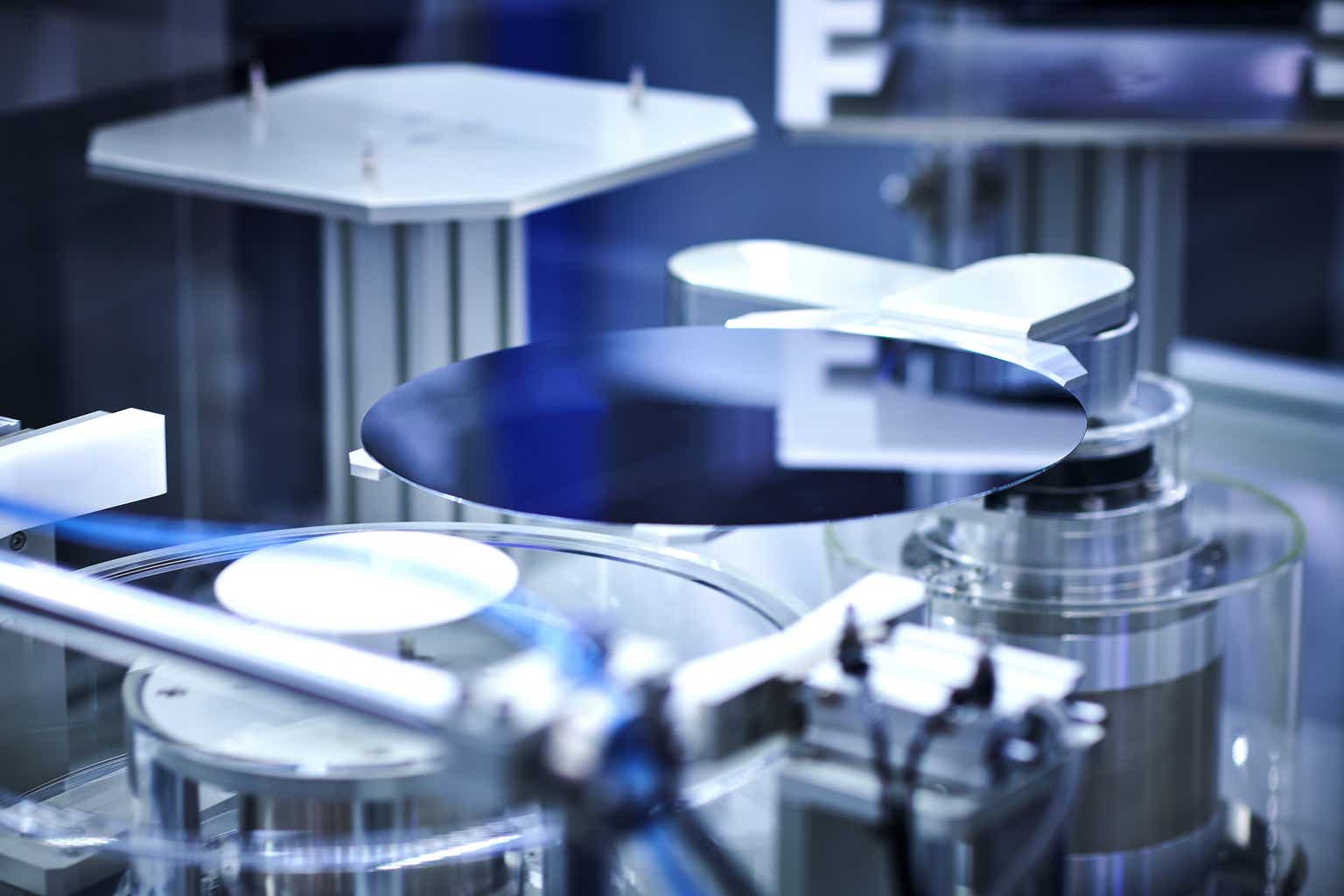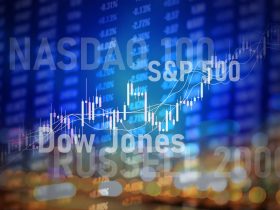There are few secrets in the semiconductor space, and that’s particularly true when you look at top-of-mind opportunities like silicon carbide (or SiC) and gallium nitride (or GaN) semiconductors. As a maker of essential chip-making equipment used in the production of SiC and GaN chips (as well as other chips/components like VCSELs and microLEDs (or mLEDs), it’s not surprising that Aixtron’s (OTCPK:AIIXY) (OTCPK:AIXXF) (AIXA.DE) shares have almost quadrupled over the last four years as companies like Infineon (OTCQX:IFNNY), ON Semi (ON), STMicro (STM), and Wolfspeed (WOLF) scramble to build production capacity and take advantage of emerging opportunities in auto electrification, factory automation, and other emerging high-power applications.
I have no real concerns that Aixtron won’t see several years of growth on the back of investments into GaN and SiC capacity. I’m likewise still relatively bullish on the longer-term opportunities for VCSELs and mLEDs. Where my concern lies is in the valuation and the growth that is already embedded into the price – at today’s valuation Aixtron would already need to maintain over 10% long-term annual revenue growth and generate top-tier free cash flow margins. Accordingly, while I don’t rule out the possibility of even higher highs from here, this is looks like more of a momentum play than a core investment opportunity.
Powering Up
Aixtron has long been a leader in metal-organic chemical vapor deposition (or MOCVD) equipment, a subsegment of the epitaxy equipment market that has generally only made up a low single-digit percentage of the overall wafer fabrication equipment (or WFE) market over the past decade.
While MOCVD is not a widely-used technology, it does have its particular uses. MOCVD tools use precision-controlled gases to create thin layers of atoms on a wafer and they have long been used to create LEDs and other optoelectronic devices. Indeed, Aixtron enjoyed a boom around 10-15 years ago (2009-2012) on large-scale investments into LED production capacity and then another boom in 2016-2018 as companies invested in equipment to produce VCSELs and other components tied to 3D sensing (primarily to serve demand from Apple (AAPL) for its phones).
Now a new boom has begun as companies scale up production capacity for new specialized high-power semiconductors based on GaN and SiC. These materials are better able to handle the particular demands of new high-power applications in areas like inverters for electric vehicles, inverters for PV cells, industrial power supplies, server and telecom power supplies, and so on. While SiC arguably gets more attention today given its leverage to vehicle electrification, GaN (for both high power and high frequency RF applications) could be just as large and there are other opportunities in more specialized applications like gallium arsenide (or GaAs), indium phosphate (or InP), and GaN-on-SiC.
Aixtron has long enjoyed leading share in the MOCVD space, but the growth in recent years in GaN and SiC investments has driven the company’s market share from the high-50%’s into the 70%’s. The company has long enjoyed even stronger share in its core areas (optoelectronics, et al) and has established a strong position in GaN, while lagging Tokyo Electron (OTCPK:TOELY) with around 20% to 30% share in the SiC market.
New Systems Look To Drive Increased Share
I expect that SiC market share to improve meaningfully in the coming years. With the move to 200mm wafers, there are new tool sales opportunities in the market and Aixtron has launched a new tool that should drive meaningful share growth for the company.
The G10-SiC system is capable of handling both 150mm and 200mm wafers, but the key feature here is that it is a multi-batch tool that can handle up to nine 150mm wafers and six 200mm wafers. By comparison, Tokyo Electron’s systems offer single-wafer capability (1x200mm) or mini-batch capability (3x150mm).
Aixtron does not claim that its multi-batch technology achieves the absolute best results (the highest production yields), but when factoring in consistency, speed/processing time, and so on, the throughput advantages more than compensate for the yield deficit and achieve a meaningful cost-per-wafer advantage. This isn’t exactly a new idea either – back in the day, Veeco (VECO), a smaller rival in the MOCVD space took meaningful share in LED tools on the basis of overall cost-per-wafer even though its yields were more on the order of “good enough” versus “really good”.
Aixtron is already the vendor of choice for Wolfspeed and Bosch and there are rumors that ON Semi has added Aixtron tools, while Infineon and STMicro are evaluating them. Traditionally Infineon, Rohm, and STMicro have been big Tokyo Electron customers and winning these customers would drive significant share shift for Aixtron (as well as revenue and profit growth); while companies like Renesas (OTCPK:RNECY) and Toshiba are also technically in the mix as potential customers, those may be harder competitive takeaways.
The Opportunity
I expect demand for tools used to produce SiC and GaN chips to push Aixtron’s revenue EUR 700M or more as soon as next year, and I expect at least three strong years of capex investment spending on these tools.
What happens next is a major point of contention between bulls and bears. Infineon, ON Semi, STMicro, and Wolfspeed all are underway with ambitious capex expansion plans, but that capex won’t continue indefinitely – eventually they will no longer be catching up to demand and will instead have surplus capacity in place. At that point I expect Aixtron will hit an “air pocket” from power/RF customers.
I do think, though, that this will be temporary – while there is a surge in capex spending now, and chip companies almost always overshoot in this part of the cycle, the longer-term (2030+) projections for vehicle electrification, renewable power (including microgrids), factory automation, and building electrification, to say nothing of ongoing growth in data centers and wireless infrastructure, simply require more chip-making capacity than what is already contemplated. Said differently, Aixtron’s business will remain highly cyclical, but I don’t think we’ll see the one-time boom cycle that we saw with LEDs (and have, so far, seen with VCSELs).
As far as other market opportunities go, there’s less certainty. I do think demand for VCSELs will grow from here as usage grows in markets outside of phones (like robotics and ADAS), but it will take time and likely won’t be another “boom cycle” for Aixtron. I do also think mLEDs will take off eventually (first in high-end consumer devices like phones and watches and then later in applications like TVs), but that market is likely three to five years away from a big tooling cycle.
The Outlook
I’m expecting Aixtron to more than double its revenue over the next five years, largely on the back of demand for tools to produce power and RF semiconductors (GaN and SiC, and to a lesser extent GaAs and InP). Markets like VCSEL and mLED could offer some upside, but I’m not counting on it.
I expect strong demand and growing revenue to support very healthy margin expansion for Aixtron, with operating margins in the mid-to-high 20%’s and EBITDA margins close to 30% in a few years. That, in turn, should support free cash flow margins in the high 20%’s.
The problem is that the market already expects all of this and then some. If I work backwards with my discounted cash flow approach, the current price already embeds over 10% long-term revenue growth (2032 revenue of almost EUR 1.3B) and FCF margins consistently in the mid-to-high 20%’s. Now, the best WFE companies (Applied Materials (AMAT), ASML (ASML), and Lam Research (LRCX), among others) can certainly produce 25%+ FCF margins in the good years, but year-in, year-out mid-to-high 20%’s FCF margins strains belief (not impossible, just not likely). Of course, there are multiple moving parts to this kind of analysis, and it’s certainly possible that Aixtron will see much stronger peak years (higher revenue and higher margins), but I do note the risk that this is a cyclical business and I consider some future year-over-year revenue declines and weaker margins a near-certainty at some point over the next 10+ years.
Given the cyclicality of the business, discounted free cash flow is only one valuation tool. I’m also a fan of using multiples-based approaches (EV/rev, EV/EBITDA, et al) driven by factors like anticipated revenue growth and profitability (EBITDA margin, ROCE, et al) that have historically correlated well with forward multiples. Doing that, I get a blended fair value about 20% above today’s price and if I dial everything up to 11, I can get even greater upside (over 50% in some scenarios).
The Bottom Line
Even the greatest growth stories have their limits – ASML still has an attractive long-term opportunity with its lithography tools, but the shares are down about 25% from their 52-week high and more than 30% from their all-time high. I mention this as a counterpoint to “just buy it … growth always works” arguments from momentum investors.
By no means do I think the good times are over for Aixtron, and I can see credible paths forward to beat-and-raise results for at least a couple more years. Still, I would rather buy these shares on a 20%-25% pullback (the stock is about 13% off its high) and with the mindset going in that I’m playing a momentum-driven game of musical chairs and likely not buying a long-term core holding, even with my bullishness on GaN/SiC and mLED over the long term.
Editor’s Note: This article discusses one or more securities that do not trade on a major U.S. exchange. Please be aware of the risks associated with these stocks.
Read the full article here











Leave a Reply